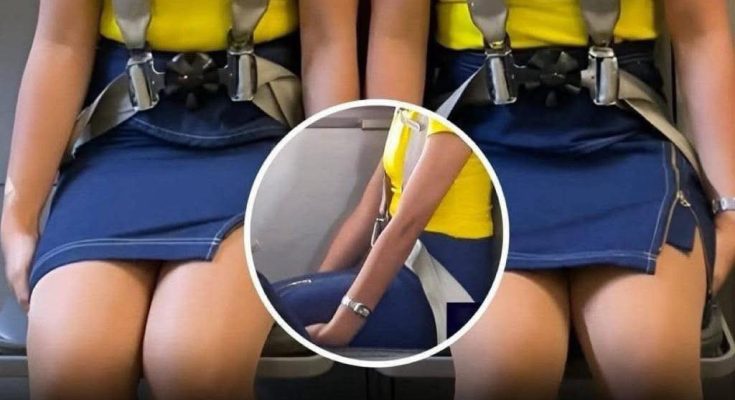If you’ve ever traveled on a commercial flight, you might have noticed something interesting flight attendants often sit on their hands during takeoff and landing. While it may seem like a quirky behavior, it’s actually a safety measure aimed at protecting both the crew and passengers.
Flight attendants do much more than just serve snacks and drinks; they are trained safety experts responsible for handling in-flight emergencies and ensuring everyone’s safety on board.
One particular protocol that catches the attention of many passengers is the bracing position that flight attendants take during these critical phases of flight.
Recently, a flight attendant named Henny Lim from Cebu Pacific, a Philippine airline, gained attention on TikTok for explaining this lesser-known safety procedure.
In her video, she poses the question: “Have you ever wondered why cabin crew adopts this position during takeoff and landing?” The clip begins with her demonstrating the “bracing position” in her jump seat.
During the crucial moments of takeoff and landing, the likelihood of an incident increases, and if an evacuation is needed, this bracing position enables crew members to respond swiftly.
“This position requires fastening seatbelts tightly, sitting upright, placing hands under the thighs, keeping arms relaxed, and ensuring feet are flat on the floor,” the voiceover elaborates in the video, which has recently gained popularity after being shared in 2022.
Tucked hands.
In the video, Henny and a fellow cabin crew member show how they secure themselves in their jump seats by tucking their hands under their thighs. This technique helps keep their arms and hands steady, minimizing any involuntary movements that might occur due to turbulence, hard landings, or sudden jolts, which could hinder their ability to respond quickly.
“The goal is to maintain a rigid position so that if an unexpected emergency occurs, the body sustains less damage. This approach limits movement, reducing the risk of injury during an impact.”
“During this time, your flight attendants will also conduct a ‘silent review’ to prepare for any emergency situations during take-off and landing.”
Before the video concludes, viewers hear, “…Safe flight everyone.”
‘Not regulation’.
A seasoned flight attendant shared with Reader’s Digest that the practice of sitting on one’s hands is more about individual choice than any official rule.
It’s essential to position our hands correctly in the brace position, and if you prefer, you can sit on your hands. According to Erin Thomas, a flight attendant with over 15 years of experience, the key rule is that you shouldn’t hold onto the harness. “The brace position is what really matters,” she explained.
Erin mentioned that she likes to keep her hands resting on her lap. “It helps me appear calm,” she noted, “and passengers tend to pick up on our vibe, so if we stay composed during takeoff, they will feel more at ease too.”
Although this stance might look a bit stiff, it plays a vital role in keeping crew members safe from injury and enabling them to assist passengers right away.
Have you ever wondered why flight attendants sit on their hands? We’d love to hear your thoughts on this!







